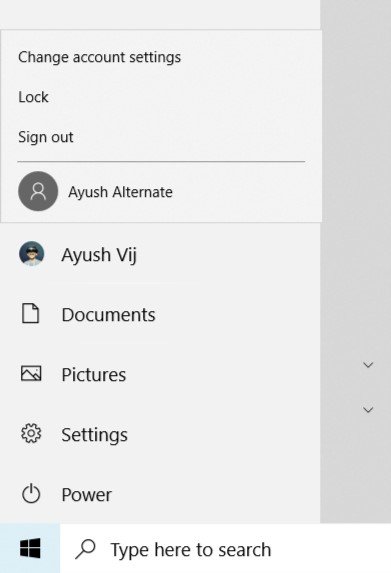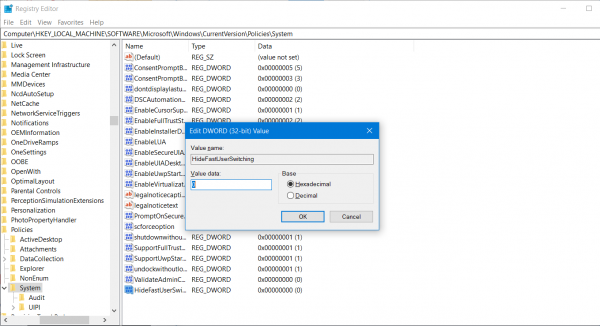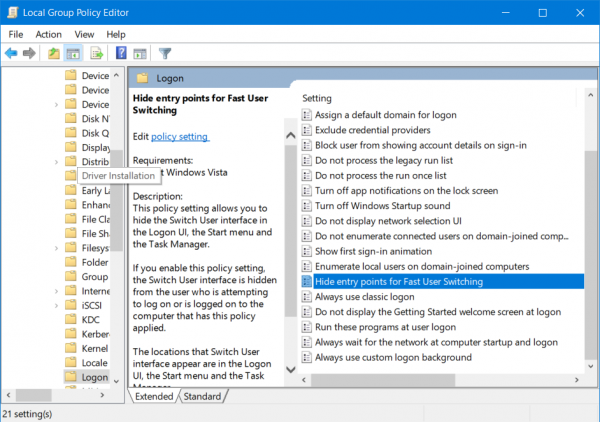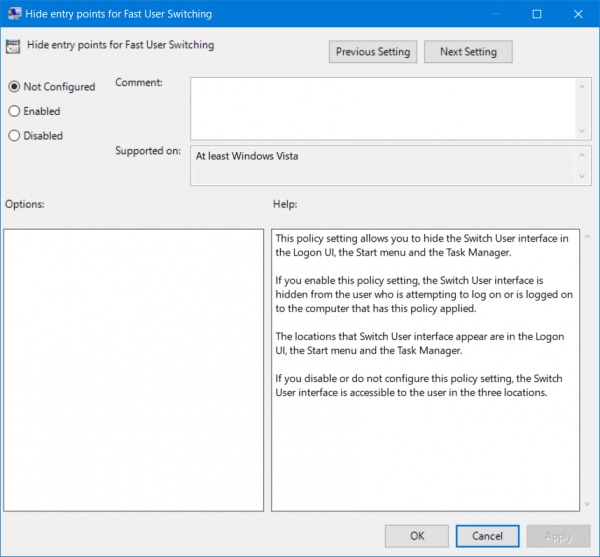Today, we will check out how to make this task of User Switching faster with some minor tweaks on Windows 11/10. Slow computers are such productivity killers. And if you are someone who needs to switch user accounts on your computer multiple times a day, it might get irritating. This is so because both accounts have some programs or applications running and resources allocated to them. This makes the process really slow. Plus, if the computer is already low on performance, it kills the natural fluidic flow of the user.

Enable or Disable Fast User Switching in Windows 11/10
We will be covering two methods to enable or disable Fast User Switching on Windows 11/10/8/7 computers:
- Using the Registry Editor.
- Using the Group Policy Editor.
Using Registry Editor
Hit the WINKEY + R button combination to launch the Run utility, type in regedit and hit Enter. Once Registry Editor opens, navigate to the following key-
HKEY_LOCAL_MACHINE\SOFTWARE\Microsoft\Windows\CurrentVersion\Policies\System
Now, right click on System and select New > DWORD (32-bit) Value.

Name this newly created DWORD as HideFastUserSwitching. Double click on it and change its Value to 0 to enable it. To disable it, you need to set its value to 1.
Reboot your computer for the changes to take effect.
Using Group Policy Editor
It is worth noting that this method will not work at all if you are using Windows Home edition. This is so because the Group Policy Editor does not come with Windows 11/10 Home.
Start by hitting the WINKEY + R button combination to start the Run box and type in gpedit.msc and then finally hit Enter.
Now, navigate to the following path inside the Group Policy Editor-
Computer Configuration\Administrative Templates\System\Logon

Double-click on the configuration listing named as Hide entry points for Fast User Switching to open the configuration page.
This policy setting allows you to hide the Switch User interface in the Logon UI, the Start menu and the Task Manager. If you enable this policy setting, the Switch User interface is hidden from the user who is attempting to log on or is logged on to the computer that has this policy applied. The locations that Switch User interface appear are in the Logon UI, the Start menu and the Task Manager. If you disable or do not configure this policy setting, the Switch User interface is accessible to the user in the three locations.

You can either select Enabled to Disable Fast User Switching or Disabled or Not Configured to Enable Fast User Switching depending on your preferences.
Click on OK and exit the Group Policy Editor.
Reboot your computer for the changes to take effect.
Read next: Switch User Option missing from Windows Login screen.